-

- Sarah Bergin
Sarah
Bergin
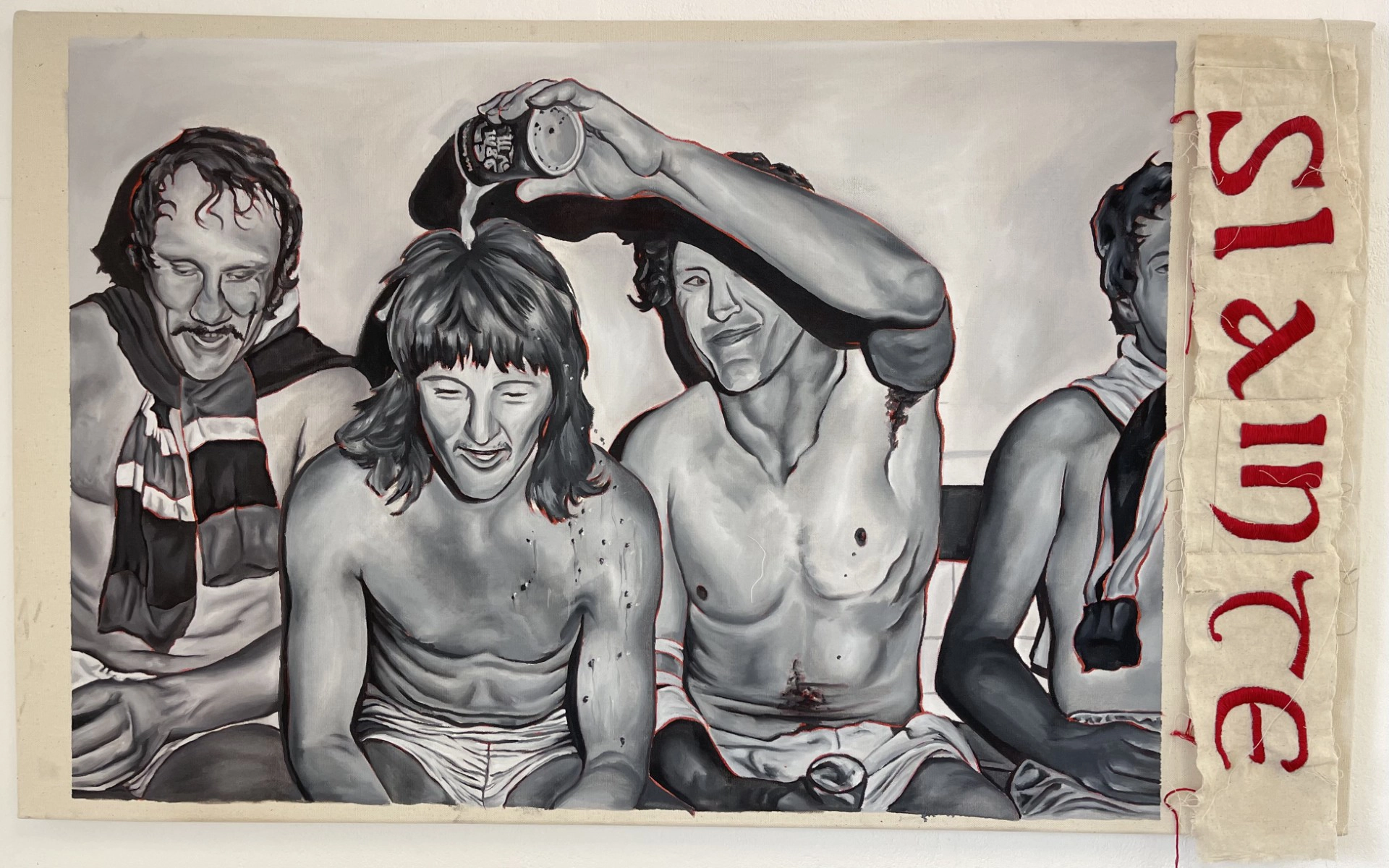
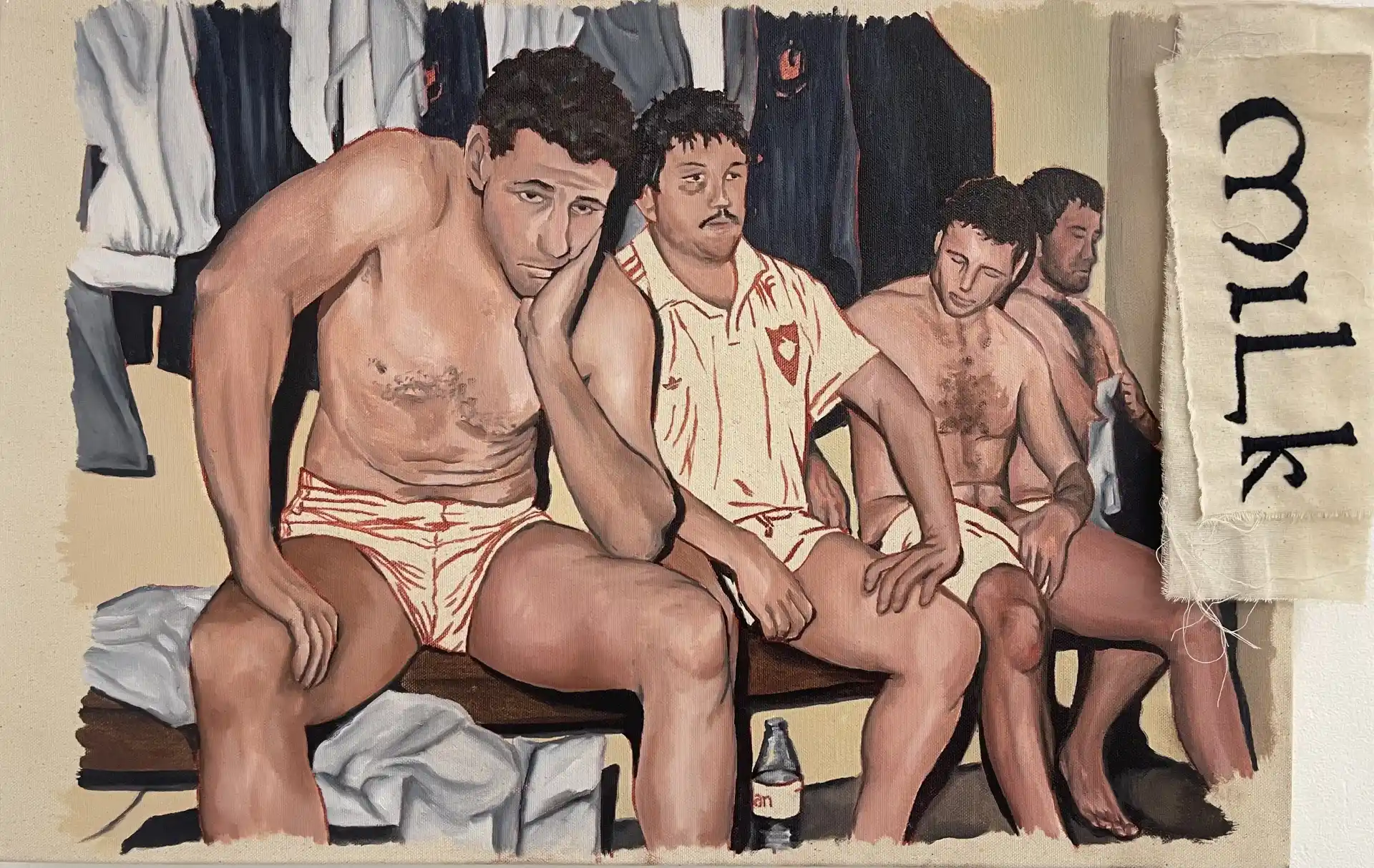
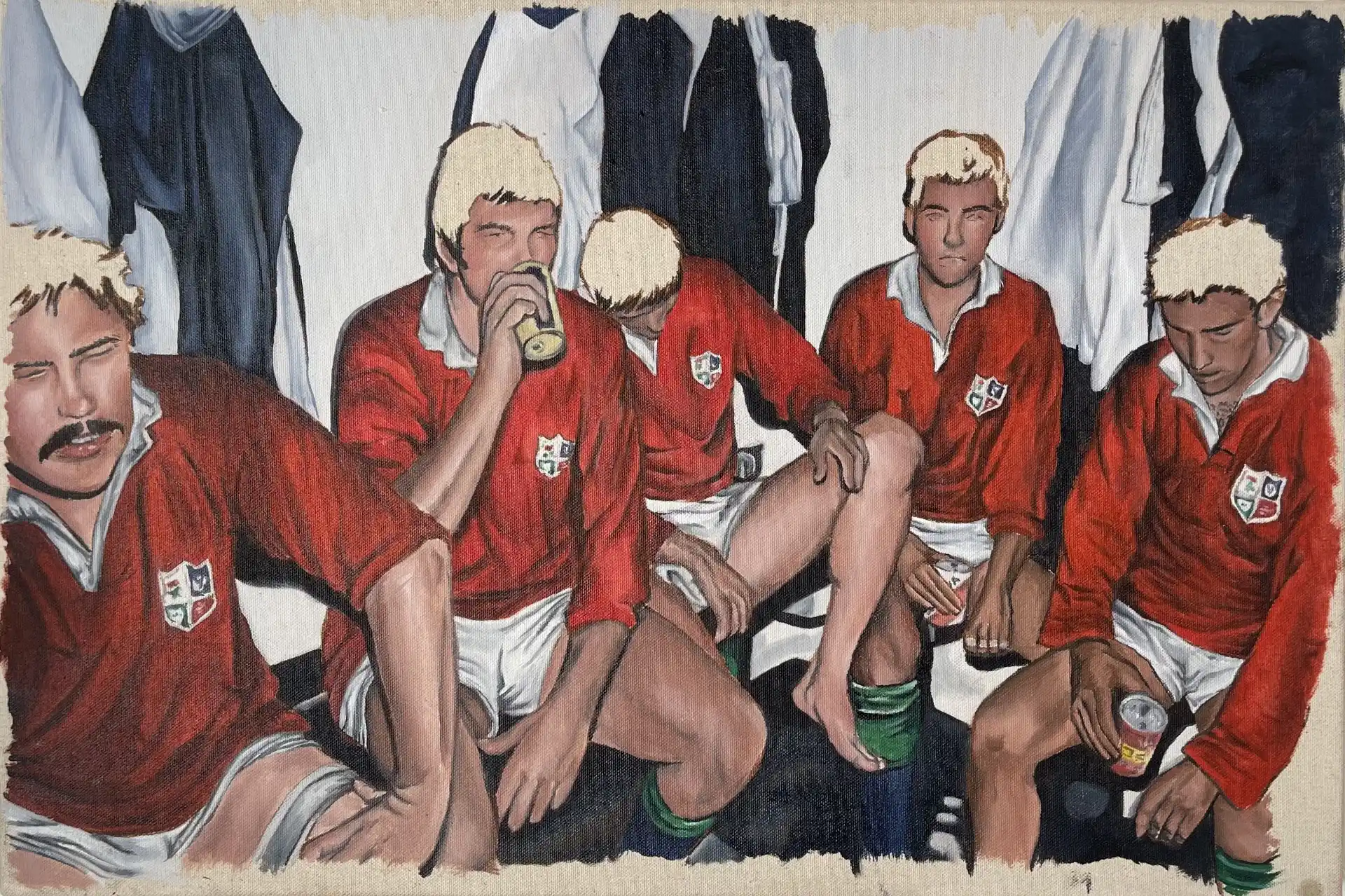
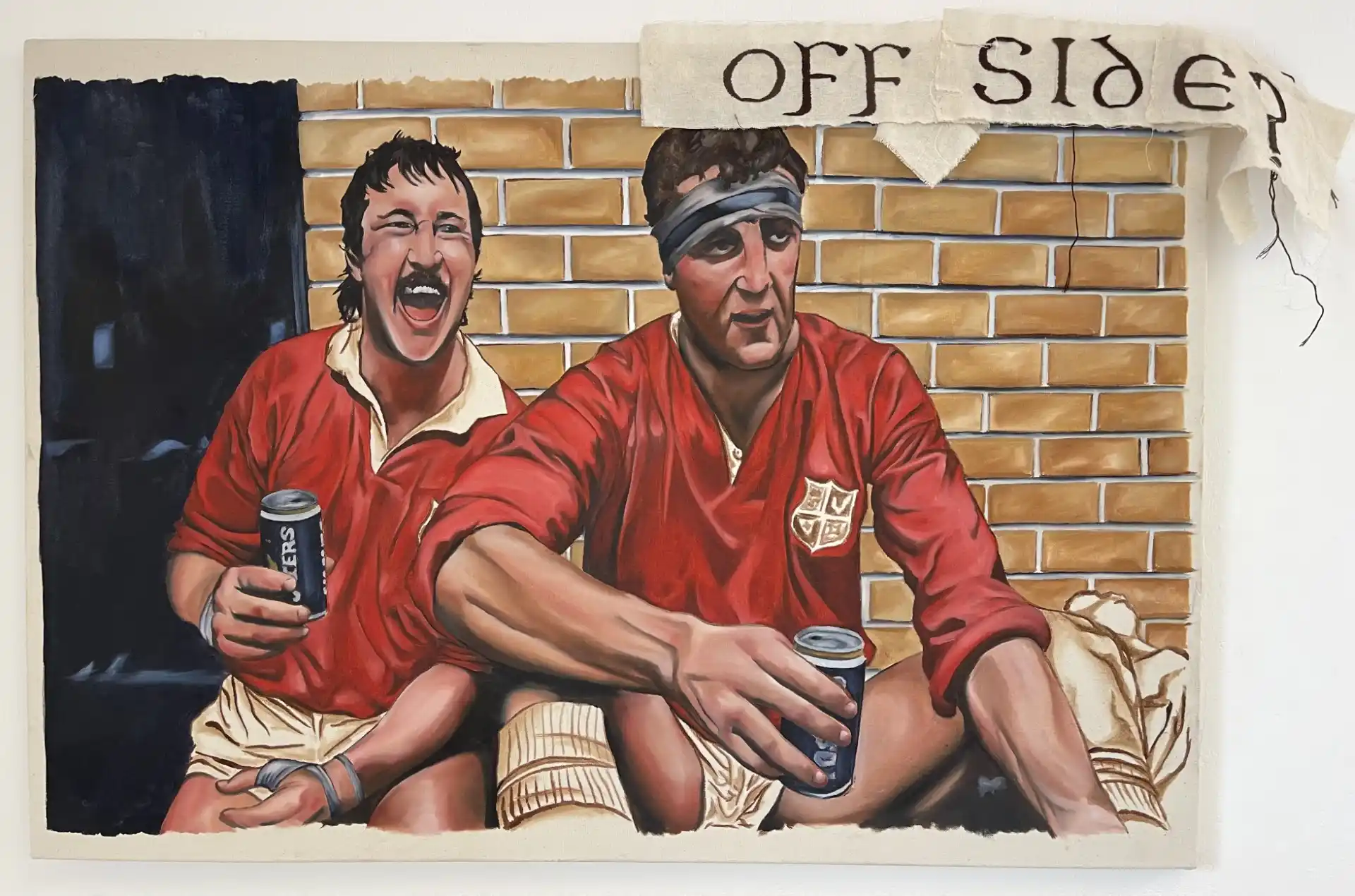
Sexism in Irish Pub Culture in the 1980's (Painting)
Sarah Bergin is a figurative artist from County Laois whose work is deeply rooted in the social and cultural history of Irish pub culture, with a particular focus on the 1980s. Through a multidisciplinary approach that includes photography, painting, and textile techniques such as embroidery and stitch, Bergin explores the complex dynamics of this era—especially the systemic discrimination and gender-based inequalities that were prevalent within the Irish pub scene.
Central to her practice is a critical examination of sexism and toxic masculinity, themes that resonate strongly with her own lived experience. Drawing inspiration from personal narratives and stories connected to her family’s pub, Bergin investigates how gender roles and social expectations shaped interactions in these traditionally male-dominated spaces. Her work also engages with representations of masculinity in sport, presenting male figures in moments of vulnerability and emotional expression. In doing so, she actively challenges the conventional framework of the ‘male gaze’ and reclaims these spaces through a feminist lens.
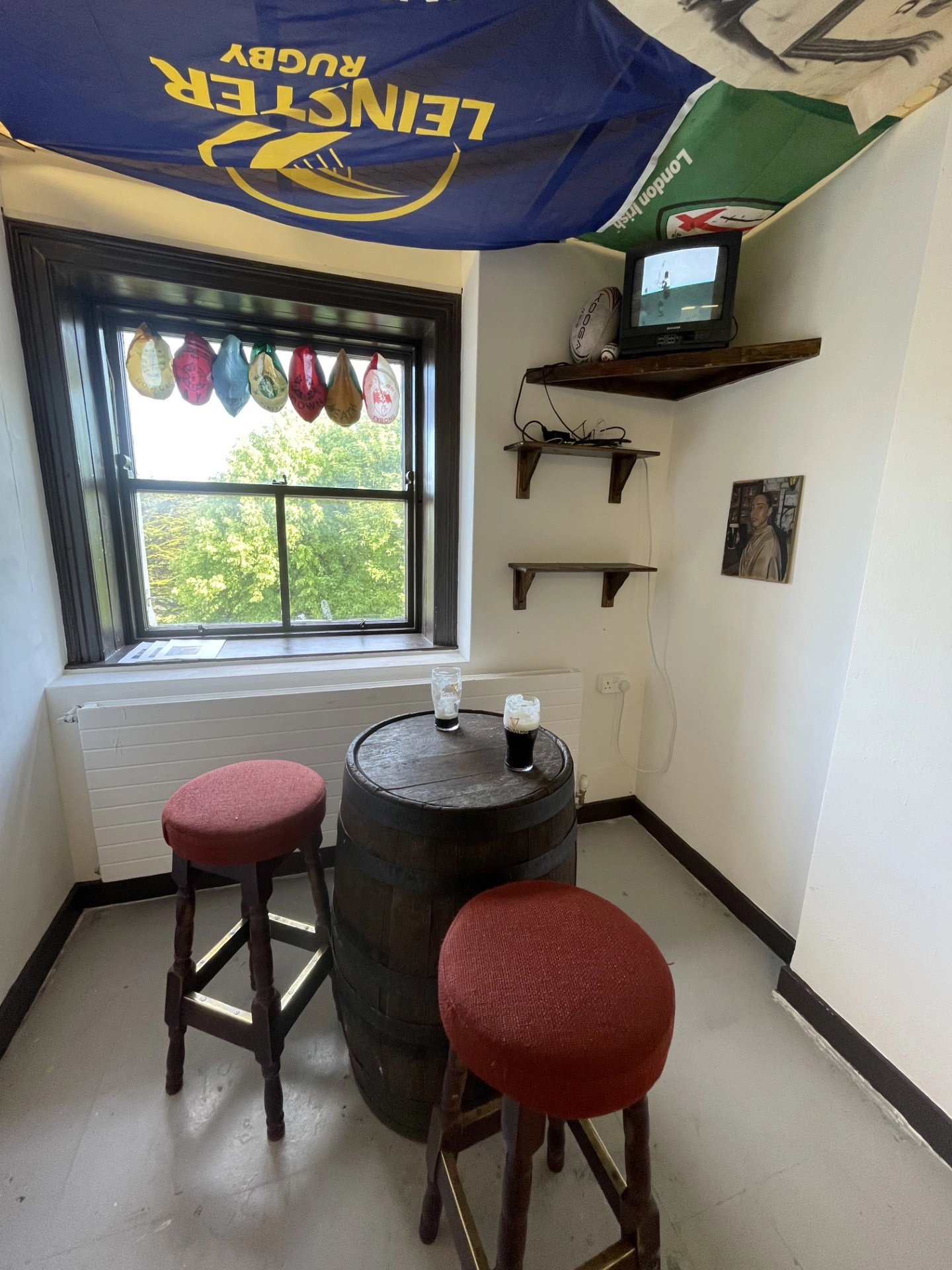
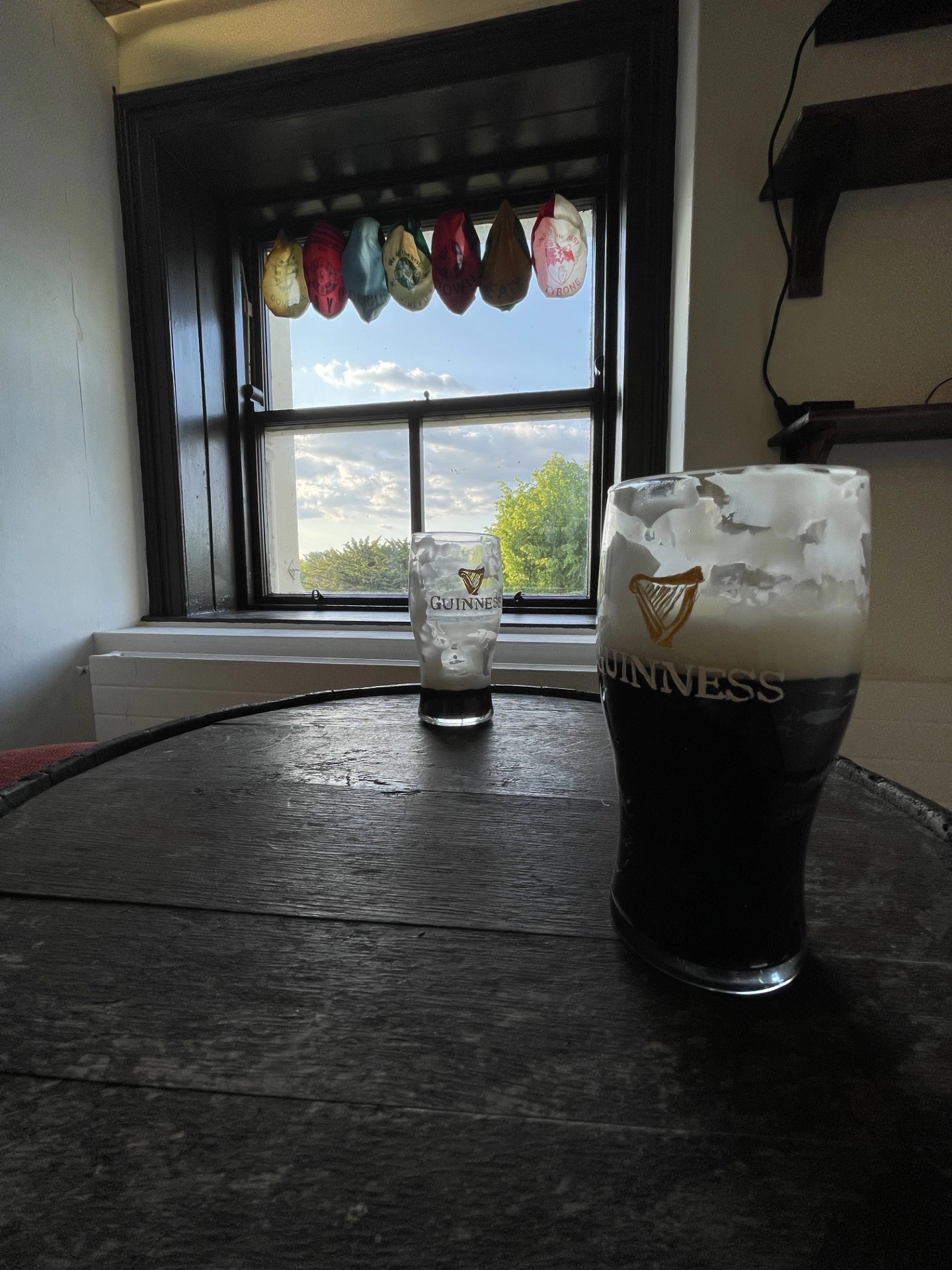
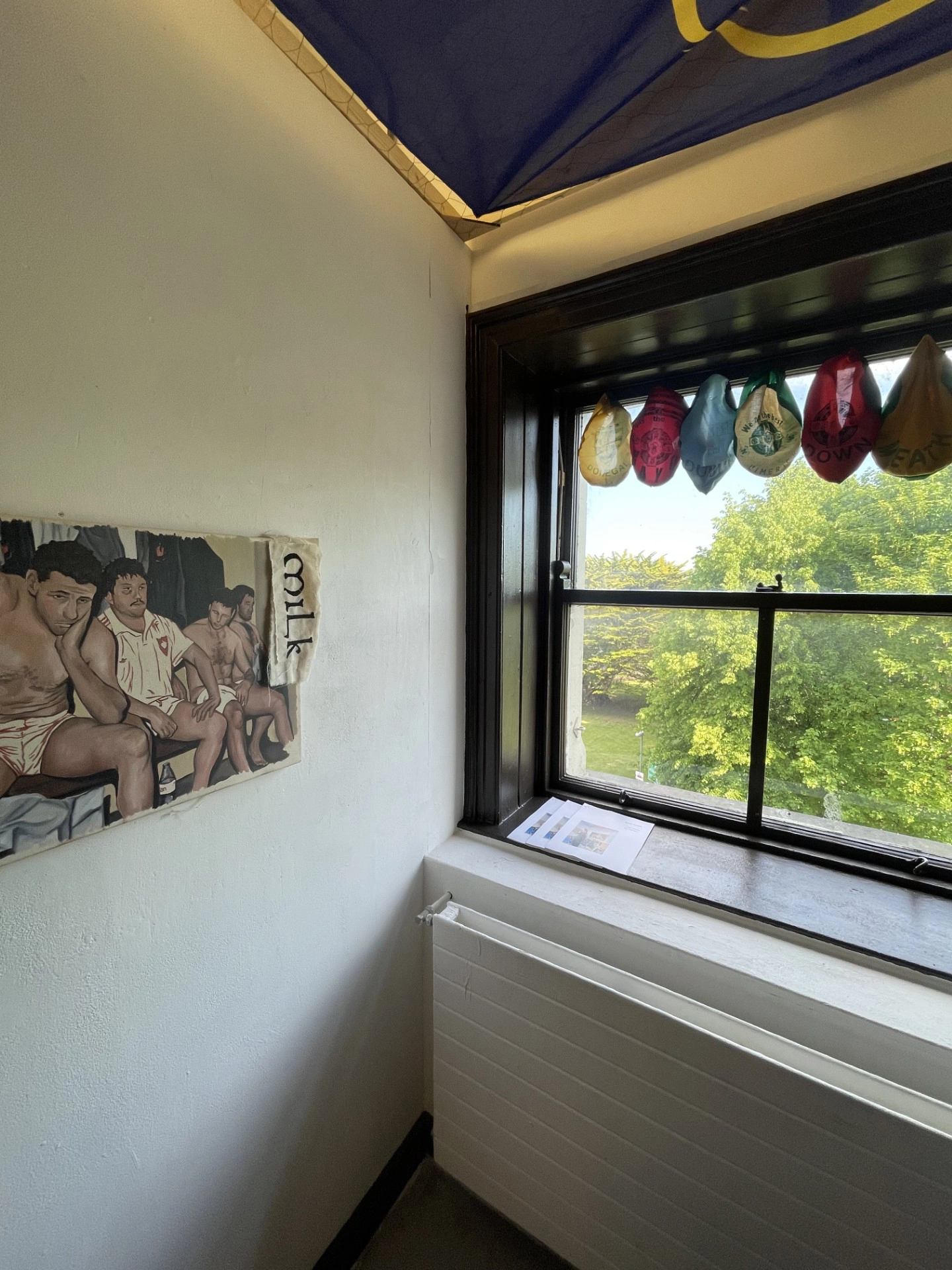

Sexism in Irish Pub Culture in the 1980's (Installation)
This installation marks a significant extension of my exploration into Irish pub culture and its intersection with gender, memory, and personal history. By reconstructing the familiar environment of my family’s pub, I’ve created a space that invites the viewer not only to observe the work but to inhabit it — to sit, listen, and feel part of a scene shaped by ritual, performance, and inherited traditions.
The inclusion of objects like the pints, rugby flags, and television footage layered with ambient pub audio serves to root the paintings in a lived, multisensory context. While my paintings often focus on the male dressing room as a site of vulnerability and unspoken tension, their placement within this domestic-pub setting underlines the cultural continuity between sporting spaces and pub spaces — both shaped by performative masculinity and exclusionary norms.
Ultimately, this work attempts to collapse the boundary between the public and the personal, the observational and the participatory. It not only reflects on a collective cultural moment from the 1980s but also reclaims that space through a feminist, deeply personal lens — inviting conversation around gender and nostalgia.